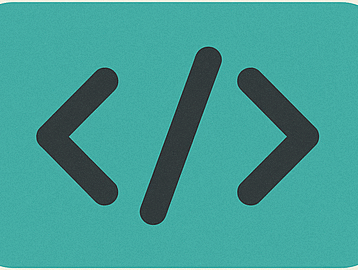Are you preparing for a job interview that involves Azure Security? Whether you’re a seasoned professional or just starting your career in cloud security, mastering Azure Security Interview Questions is key to landing your dream role. Microsoft Azure is a leading cloud platform, and its security features are critical for organizations worldwide. In this blog post, we’ve compiled the top 50 Azure Security Interview Questions to help you prepare effectively and confidently. From fundamental concepts to advanced scenarios, this guide is designed to cover everything you need to know.
Why Prepare for Azure Security Interview Questions?
As businesses increasingly adopt cloud solutions, the demand for Azure security experts is skyrocketing. Interviewers often test candidates on their knowledge of Azure’s security tools, best practices, and real-world applications. By preparing for these Azure Security Interview Questions, you’ll demonstrate your expertise in securing Azure environments, handling compliance, and mitigating risks.
This post is structured to help you understand the types of questions you might face, ranging from beginner to expert levels. Let’s dive into the top 50 Azure Security Interview Questions to get you ready!
Table of Contents
1. Basic Azure Security Interview Questions
2. Intermediate Azure Security Interview Questions
3. Advanced Azure Security Interview Questions
4. Tips to Ace Your Azure Security Interview
5. Conclusion
Basic Azure Security Interview Questions
These questions are perfect for beginners or those new to Azure security. They cover foundational concepts and tools.
1. What is Azure Security?
Azure Security refers to the tools, services, and practices used to protect data, applications, and infrastructure on Microsoft Azure.
2. What is Microsoft Defender for Cloud?
It’s a cloud-native security solution that provides threat protection, security posture management, and compliance monitoring for Azure resources.
3. What is Azure Active Directory (Azure AD)?
Azure AD is Microsoft’s cloud-based identity and access management service, used to control access to Azure resources.
4. What is the purpose of Role-Based Access Control (RBAC) in Azure?
RBAC allows you to assign specific permissions to users, groups, or applications, ensuring least-privilege access.
5. What are Azure Security Center’s key features?
Key features include security recommendations, threat detection, and integration with other Azure services.
6. What is a Network Security Group (NSG)?
NSGs are used to filter network traffic to and from Azure resources by defining inbound and outbound rules.
7. What is Azure Key Vault?
Azure Key Vault is a service for securely storing and managing cryptographic keys, secrets, and certificates.
8. How does Azure ensure data encryption at rest?
Azure uses AES-256 encryption for data at rest, with keys managed by Azure or customer-managed keys in Key Vault.
9. What is the Shared Responsibility Model in Azure?
It defines the division of security responsibilities between Microsoft (infrastructure) and customers (data, applications).
10. What is Azure Firewall?
Azure Firewall is a managed, cloud-based network security service that protects Azure Virtual Network resources.
Intermediate Azure Security Interview Questions
These questions dive deeper into Azure security tools, configurations, and best practices.
1. How do you secure an Azure Virtual Machine?
Use NSGs, enable Microsoft Defender for Cloud, apply patches, and configure RBAC.
2. What is Conditional Access in Azure AD?
Conditional Access enforces policies based on user location, device state, or risk level before granting access.
3. How does Azure DDoS Protection work?
It mitigates distributed denial-of-service attacks by analyzing traffic patterns and blocking malicious traffic.
4. What is the difference between Azure AD B2B and B2C?
B2B enables collaboration with external partners, while B2C supports consumer-facing identity management.
5. How do you monitor security events in Azure?
Use Azure Monitor, Log Analytics, and Microsoft Defender for Cloud to track and analyze security events.
6. What is Azure Sentinel?
Azure Sentinel is a cloud-native SIEM (Security Information and Event Management) solution for threat detection and response.
7. How do you implement network segmentation in Azure?
Use Virtual Networks (VNets), NSGs, and Azure Firewall to segment networks.
8. What is the purpose of Azure Policy?
Azure Policy enforces compliance by defining rules for resource configurations.
9. How do you secure Azure Blob Storage?
Enable encryption, use Shared Access Signatures (SAS), and configure RBAC or Azure AD authentication.
10. What is the difference between Azure Security Center and Azure Sentinel?
Security Center focuses on security posture and threat protection, while Sentinel provides advanced threat hunting and incident response.
Advanced Azure Security Interview Questions
These questions are designed for experienced professionals and focus on complex scenarios and integrations.
1. How do you implement a Zero Trust model in Azure?
Use Azure AD Conditional Access, verify identities, enforce least-privilege access, and monitor continuously.
2. What is Azure Private Link, and how does it enhance security?
Private Link enables secure access to Azure services over千人 with private endpoints, bypassing public internet.
3. How do you secure Azure Kubernetes Service (AKS)?
Enable RBAC, use Azure AD for authentication, apply network policies, and monitor with Defender for Cloud.
4. What is the role of Azure Bastion in security?
Azure Bastion provides secure RDP and SSH access to VMs without exposing public IPs.
5. How do you handle secrets rotation in Azure Key Vault?
Use managed identities and automate rotation with Azure Functions or Event Grid.
6. What is Azure Information Protection (AIP)?
AIP classifies, labels, and protects sensitive data using encryption and access policies.
7. How do you secure APIs in Azure API Management?
Use OAuth 2.0, API keys, and policies to restrict access and validate requests.
8. What is the difference between managed identities and service principals?
Managed identities are automatically managed by Azure, while service principals require manual configuration.
9. How do you implement encryption for Azure SQL Database?
Enable Transparent Data Encryption (TDE) and Always Encrypted for sensitive data.
10. What are the benefits of using Azure Confidential Computing?
It protects data during processing using secure enclaves, ensuring data confidentiality.
Advanced New Azure Security Interview Questions
1. How does Azure AD Privileged Identity Management (PIM) enhance security?
PIM enables just-in-time access for privileged roles, reducing the risk of unauthorized access by limiting standing privileges.
2. What steps would you take to secure a hybrid Azure environment?
Use Azure Arc for consistent security policies, enable Azure AD for identity management, and deploy Azure Defender for threat detection across on-premises and cloud resources.
3. How do you ensure compliance with GDPR in Azure?
Leverage Azure Policy for data residency, enable encryption, use Azure Information Protection for data classification, and monitor with Azure Sentinel.
4. What is the role of Azure Monitor in security operations?
Azure Monitor collects and analyzes logs to detect anomalies, trigger alerts, and integrate with security tools for proactive threat response.
5. How do you secure data transfers between Azure and on-premises systems?
Use Azure ExpressRoute for private connectivity, enable VPN encryption, and apply Azure Firewall rules to filter traffic.
6. What is Azure Security Benchmark, and why is it important?
It’s a set of best practices for securing Azure workloads, aligning with frameworks like CIS and NIST to improve security posture.
7. How do you mitigate insider threats in Azure?
Implement least-privilege access with RBAC, enable Azure AD Identity Protection for risk detection, and monitor user behavior with Sentinel.
8. What are the key considerations for securing Azure Functions?
Use managed identities, secure API endpoints with Azure AD authentication, and enable network restrictions with VNet integration.
9. How does Azure support HIPAA compliance for healthcare applications?
Azure provides HIPAA-compliant encryption, audit logging, and Business Associate Agreements (BAA) to meet regulatory requirements.
10. What is the difference between Azure AD Conditional Access and Multi-Factor Authentication (MFA)?
MFA adds a second layer of authentication, while Conditional Access enforces policies based on conditions like location or device compliance.
11. How do you perform threat modeling for an Azure application?
Identify assets, map data flows, use Microsoft’s STRIDE model to assess risks, and apply mitigations like encryption and access controls.
12. What is the role of Azure Application Gateway in security?
It provides a Web Application Firewall (WAF) to protect against common web vulnerabilities like SQL injection and cross-site scripting.
13. How do you secure Azure Cosmos DB?
Enable encryption at rest, use RBAC for access control, configure private endpoints, and monitor with Azure Monitor.
14. What is the purpose of Azure AD Identity Protection?
It detects and responds to identity-based risks like compromised credentials using machine learning and user behavior analytics.
15. How do you handle a security incident in Azure Sentinel?
Use playbooks to automate responses, investigate with hunting queries, and correlate events across logs to identify the root cause.
16. What are the benefits of using Azure Network Watcher for security?
Network Watcher monitors traffic, diagnoses vulnerabilities, and provides insights into NSG flow logs for better network security.
17. How do you secure Azure DevOps pipelines?
Use RBAC for access control, store secrets in Azure Key Vault, and enable Microsoft Defender for Cloud to scan for vulnerabilities.
18. What is the difference between customer-managed keys and platform-managed keys in Azure?
Customer-managed keys are controlled by the user in Key Vault, while platform-managed keys are handled by Azure for simplicity.
19. How do you ensure secure access to Azure resources in a multi-tenant environment?
Use Azure Lighthouse for delegated access, enforce tenant isolation with Azure AD, and apply policies to restrict cross-tenant interactions.
20. What steps would you take to recover from a ransomware attack in Azure?
Isolate affected resources, restore from backups using Azure Backup, investigate with Sentinel, and strengthen security with Defender for Cloud.
Additional Tips for Your Azure Security Interview
1. Understand Core Concepts: Be clear on Azure AD, RBAC, NSGs, and encryption.
2. Practice Hands-On: Use Azure’s free tier to experiment with security configurations.
3. Stay Updated: Follow Azure’s security blog for the latest features and updates.
4. Use Real-World Scenarios: Relate answers to practical examples from your experience.
5. Certifications Help: Earning certifications like Microsoft Certified: Azure Security Engineer Associate boosts credibility.
Conclusion
Preparing for Azure Security Interview Questions is your ticket to standing out in a competitive job market. By mastering these top 50 Azure Security Interview Questions, you’ll be well-equipped to showcase your expertise in securing Azure environments. Whether you’re tackling basic concepts like RBAC or advanced topics like Zero Trust, thorough preparation is key.
Start studying today, practice in Azure’s sandbox environment, and approach your interview with confidence. Have any favorite Azure Security Interview Questions or tips to share? Let us know in the comments below!


1 thought on “Top 50 Azure Security Interview Questions 2025”